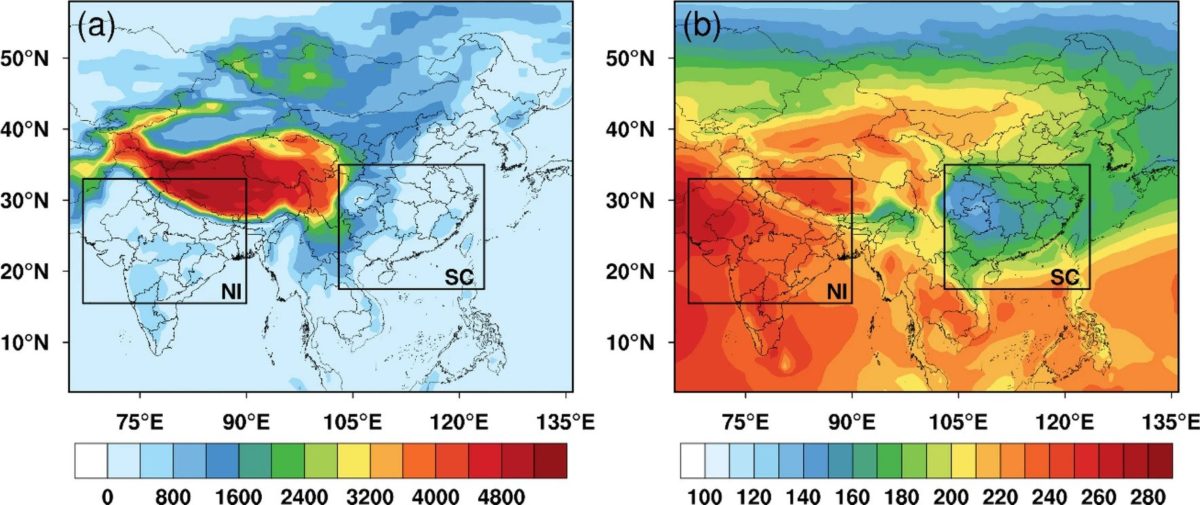Scientists from Sun Yat-sen University in China have tried to explain why northern India has higher solar irradiance than China, given that they are similar in terms of latitude and altitude. They analyzed the impact of clouds and aerosols on PV potential and concluded that disparities in clouds and aerosol efficiency could explain the difference.
The academics used the Clouds and the Earth’s Radiant Energy System (CERES) to collect data on direct and diffused surface shortwave radiant fluxes. They looked at a range of atmospheric conditions, including aerosols and clouds, aerosols without clouds, clouds without aerosols, and no aerosols or clouds.
They added that data into the PVLIB-Python modeling tool produced by Sandia National Laboratory, which calculates solar irradiance on the plane of a PV panel (POAI), measured as kWh/m2/day. This represents the maximum theoretical potential of PV power generation. The researchers found that northern India has a PV potential of 5.27 kWh/m2/day, versus 3.57 kWh/m2/day in China.
To explain the difference, the scientists analyzed the impacts of clouds and aerosols on POAI in the two regions.
“The reduction in POAI due to the impacts of clouds and aerosols are defined as the cloud effect (CE) and aerosol effect (AE) in the unit of kWh/m2/d, respectively,” they explained. “The percentages of reductions in the all-sky POAI contributed by clouds (PCE) and aerosols (PAE) are also calculated to show the relative importance of the two factors.”
The results show that the cloud impact is stronger in absolute and relative terms in southern China than in northern India. The impact is up to 2.67 kWh/m2/day or 75% of the POAI reduction under all-sky conditions.
The scientists explained the variations in the cloud effect between the two regions in terms of co-variations in cloud fraction and optical depth. Southern China has nearly twice as much cloud density as northern India. Clouds are also thicker and therefore transmit less solar irradiation.
The researchers found that aerosol optical depth is higher in southern China than in northern India, but aerosol impacts on POAI are similar in magnitude over the two regions.
“The aerosols mostly composed of dust and sulfate over [northern India] are found to be nearly three times more efficient in reducing POAI than the counterpart which is manually composed of sulfate over [southern China],” said the scientists.
They shared their findings in “Diverse cloud and aerosol impacts on solar photovoltaic potential in southern China and northern India,” which was recently published in Scientific Reports.
This content is protected by copyright and may not be reused. If you want to cooperate with us and would like to reuse some of our content, please contact: editors@pv-magazine.com.



2 comments
By submitting this form you agree to pv magazine using your data for the purposes of publishing your comment.
Your personal data will only be disclosed or otherwise transmitted to third parties for the purposes of spam filtering or if this is necessary for technical maintenance of the website. Any other transfer to third parties will not take place unless this is justified on the basis of applicable data protection regulations or if pv magazine is legally obliged to do so.
You may revoke this consent at any time with effect for the future, in which case your personal data will be deleted immediately. Otherwise, your data will be deleted if pv magazine has processed your request or the purpose of data storage is fulfilled.
Further information on data privacy can be found in our Data Protection Policy.